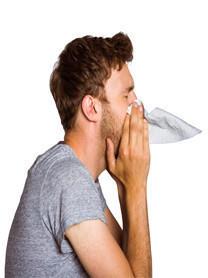Harm Reduction Strategies That Save Lives

Jordyn Mastrodomenico is a counselor in New Jersey. She evaluates patients using many different procedures, in order to determine what treatments must be carried out in order to properly assess their symptoms. Counselors provide consultation for each patient and their families.
Introduction
The escalating global drug crisis demands pragmatic, compassionate responses. Harm reduction has emerged as a beacon of hope, offering evidence-based strategies that prioritize human dignity and survival. These methods do not condone drug use but rather aim to mitigate its most perilous consequences.
Convenient Access to Treatment from Home
Finding reliable options for managing health conditions has become easier with advancements in telemedicine. For individuals seeking support for alcohol or opioid dependency, the ability to get naltrexone online offers a discreet and efficient solution. This prescription medication, used to block the effects of opioids and reduce cravings, can now be accessed through licensed online platforms. Patients benefit from virtual consultations, secure delivery, and ongoing support—all from the comfort of home. This approach not only saves time but also encourages more people to seek the help they need without the barriers of traditional in-person visits.
Understanding Harm Reduction
Definition and Core Principles
Harm reduction is a public health philosophy grounded in the recognition that abstinence is not always an immediate or achievable goal. Instead, it focuses on minimizing the health, social, and legal repercussions associated with substance use. Central to harm reduction are principles of human rights, participant autonomy, and non-judgmental support. It seeks to meet individuals where they are, providing lifesaving interventions without the prerequisite of sobriety.
The Stigma Surrounding Harm Reduction
Despite its efficacy, harm reduction often faces formidable stigma. Critics mistakenly perceive it as enabling drug use, fueling public opposition. This societal misconception hampers the expansion of critical services, leaving vulnerable populations without essential support. Reframing the narrative is vital—harm reduction is not about surrendering to addiction but about safeguarding lives and creating pathways to recovery.
Proven Harm Reduction Strategies
Needle Exchange Programs
Needle exchange programs (NEPs) are cornerstones of harm reduction, offering sterile syringes in exchange for used ones. These initiatives drastically curtail the transmission of bloodborne diseases such as HIV and hepatitis C. Beyond reducing infection rates, NEPs often serve as vital entry points for healthcare and social services. They establish connections with individuals who may otherwise remain isolated from the medical system.
Safe Consumption Spaces
Safe consumption spaces, also known as supervised injection sites, provide controlled environments where individuals can use substances under medical supervision. These facilities are equipped to intervene immediately in case of overdose, significantly reducing mortality rates. Moreover, they offer a dignified space free from the dangers of public drug use and the threat of criminalization. By embedding healthcare professionals within these settings, safe consumption spaces become conduits to treatment, housing, and mental health support.
Medication-Assisted Treatment (MAT)
Medication-Assisted Treatment integrates medications like methadone, buprenorphine, and naltrexone to manage substance use disorders, particularly opioid dependence. MAT reduces cravings and withdrawal symptoms, stabilizing individuals and enabling them to pursue long-term recovery. This approach dismantles the all-or-nothing mindset, replacing it with scalable steps toward health and stability. When combined with counseling and social services, MAT yields profoundly positive outcomes.
Emerging and Innovative Approaches
Fentanyl Testing Strips
The proliferation of fentanyl-laced substances has exacerbated overdose fatalities. Fentanyl testing strips offer a rapid, low-cost means of detecting this potent synthetic opioid in street drugs. Empowering users with knowledge about the contents of their substances can lead to more cautious consumption or abstention altogether. This tool exemplifies pragmatic innovation—simple, scalable, and lifesaving.
Community-Based Naloxone Distribution
Naloxone, an opioid antagonist, reverses overdoses with remarkable speed. Expanding community-based naloxone distribution ensures this antidote is accessible not only to emergency responders but also to peers, families, and community members. Peer-distribution networks decentralize access, enabling timely intervention during critical moments. The widespread availability of naloxone transforms bystanders into lifesavers.
The Role of Policy and Legislation
Shifting from Punitive to Public Health Models
For decades, punitive drug policies have perpetuated cycles of incarceration and marginalization. A shift toward public health-centered frameworks reframes substance use as a medical issue rather than a criminal offense. Decriminalizing possession of small amounts, redirecting funds from enforcement to treatment, and expanding harm reduction services collectively dismantle structural barriers to care.
The Impact of Decriminalization
Decriminalization does not equate to legalization. It simply removes criminal penalties for personal possession, thereby reducing stigma and facilitating access to health services. Countries that have adopted this approach, such as Portugal, have witnessed declines in overdose deaths, HIV transmission, and drug-related incarceration. This policy shift underscores the potency of compassionate governance.
Community Engagement and Education
Building Trust with At-Risk Populations
Establishing trust is the linchpin of effective harm reduction. Outreach workers, many of whom have lived experience with addiction, act as bridges to hard-to-reach communities. Through consistency, empathy, and non-coercive support, these professionals cultivate relationships that foster engagement with health services.
Importance of Culturally Sensitive Outreach
Harm reduction strategies must resonate with the cultural and linguistic contexts of the populations they serve. Tailored messaging, multilingual resources, and collaboration with community leaders enhance the reach and impact of interventions. Ignoring cultural nuances risks alienating those most in need.
Challenges and Criticisms
Public Misconceptions
Persistent myths cloud public understanding of harm reduction. Many erroneously believe that such strategies increase drug use or attract crime. Rigorous studies consistently debunk these claims, yet misinformation endures. Public education campaigns are essential to dispel these fallacies and garner broader support.
Funding and Political Resistance
Securing sustainable funding for harm reduction programs remains a persistent challenge. Political ideologies, often steeped in punitive rhetoric, obstruct legislative progress. Programs frequently face underfunding or outright defunding despite their proven efficacy. Advocacy and data-driven policymaking are crucial to overcoming these hurdles.
Understanding the Road to Recovery
Alcohol withdrawal can be a challenging process, both physically and emotionally. The duration of symptoms varies based on factors like the severity of addiction and individual health. Typically, how long does alcohol withdrawal last depends on the person, but symptoms often begin within 6 to 12 hours after the last drink. Acute withdrawal may peak within 24 to 72 hours and gradually subside over 5 to 7 days. However, some individuals may experience lingering symptoms, known as post-acute withdrawal syndrome (PAWS), which can last for weeks or even months. Proper medical supervision is essential for a safe and successful recovery.
Conclusion
Harm reduction strategies embody a compassionate, evidence-based response to substance use. They save lives, preserve dignity, and lay the groundwork for recovery. The path forward demands courage to challenge entrenched stigmas, commitment to community engagement, and the political will to prioritize public health over punishment. In the face of an enduring crisis, harm reduction offers a lifeline that cannot be ignored.








